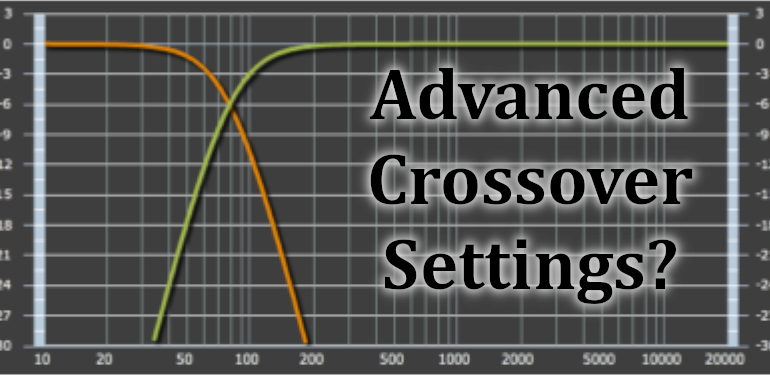Speaker Specs and Subwoofer Crossover – Should You Match Them
There are two types of advice – that meant for the masses and the stuff the experts know about. You’ve been doing enough research that you feel like you are ready for the latter. Give you the high-end advice to really dial in your system! Your first thought is your crossover. You’ve sort of got a handle on speaker specs and understand what a crossover does and why. Surely you could match up your subwoofer crossover and speaker specs to take full advantage of both? What’s the best way?
The General Advice
Before we go on, you might want to read up a little on a few things.
- What is the -3dB Point of a Speaker and Why is it Important?
- Crossover Knob on Subwoofer or AV Receiver: Proper Setting
- Proper Crossover Settings for your Speakers: The Definitive Guide
- The Case for Crossover Settings Higher Than 80Hz
To summarize the advice for the masses, your speakers can play flat down to a certain point (depending on the speaker). At that point, your subwoofer takes over and plays all the content that is too low for your speakers. This is called the crossover (where the sounds crossover from the speakers into the subwoofer). The general advice is that you set your crossover at 80Hz. Sounds lower than 80Hz are omnidirectional and can be safely played by your subwoofer. Plus, most speakers are designed to play down to at least 80Hz so it is a safe all-purpose crossover point.

Comparing Speaker Specs and Subwoofer Crossover
But you feel you are more advanced. You understand speaker specs and subwoofer crossover settings. You feel you can read the specs of your speakers and more closely match the speaker’s capabilities to the crossover. This will leave more of the sounds coming from your speakers since you have tower speakers that can produce more bass. Make sense? No? Let’s look at an example!
Let’s say that you have speakers that are rated down to 55Hz. You’ve looked at independent reviews that have taken measurements and they say that this number is accurate. Now you look at your AV receiver. It has a number of crossover setting options – 40Hz, 60Hz, 80Hz, 100Hz, 120Hz…etc. Rather than blindly setting the crossover at 80Hz, you set it at 60Hz. It’s higher than your speaker’s low point and keeps more of the sound coming from your speaker.
Is this correct?

We Hate to Be the Bearers of Bad News…
The 80Hz crossover recommendation isn’t only for the filthy masses. We (and many others) recommend 80Hz because it puts the bass into the speakers that are most capable, and best placed, to recreate that bass. Subwoofers are built for bass. As we’ve discussed, bass is omnidirectional which means it doesn’t matter which speaker plays it. Subwoofers are placed (if done correctly) to best recreate that bass.
There is an audiophile belief that every sound should come from your speakers and not a subwoofer. While most people will now admit that a subwoofer is necessary, they still believe that they need their speakers to play as much as possible. Part of this is because of the thought that the speakers that play the sounds anchor the sounds in the space. That’s true of treble and midrange, but not so of bass.
The other problem is the sunk cost fallacy. People spent a lot of money on their speakers. If they set their subwoofer crossover too high in comparison to their speaker’s specs, they are “wasting” some of their performance. That’s money wasted! Never mind that their speakers are still playing tons of bass. Bass doesn’t start at 80Hz. It starts way up at 200Hz!
Take Away
If you are going to adjust your subwoofer crossover based on your speaker’s specs, you should adjust it up and not down. Small, satellite speakers are great for Atmos or surround duties. But they often have a hard time getting down to 80Hz. Most room correction programs will detect this and adjust your crossover accordingly. But it doesn’t hurt to double-check. In our own systems, we have our crossovers set no lower than 80Hz. That isn’t because we are lazy. It’s because it sounds the best! This is one time where the rule of thumb is actually the best advice.


